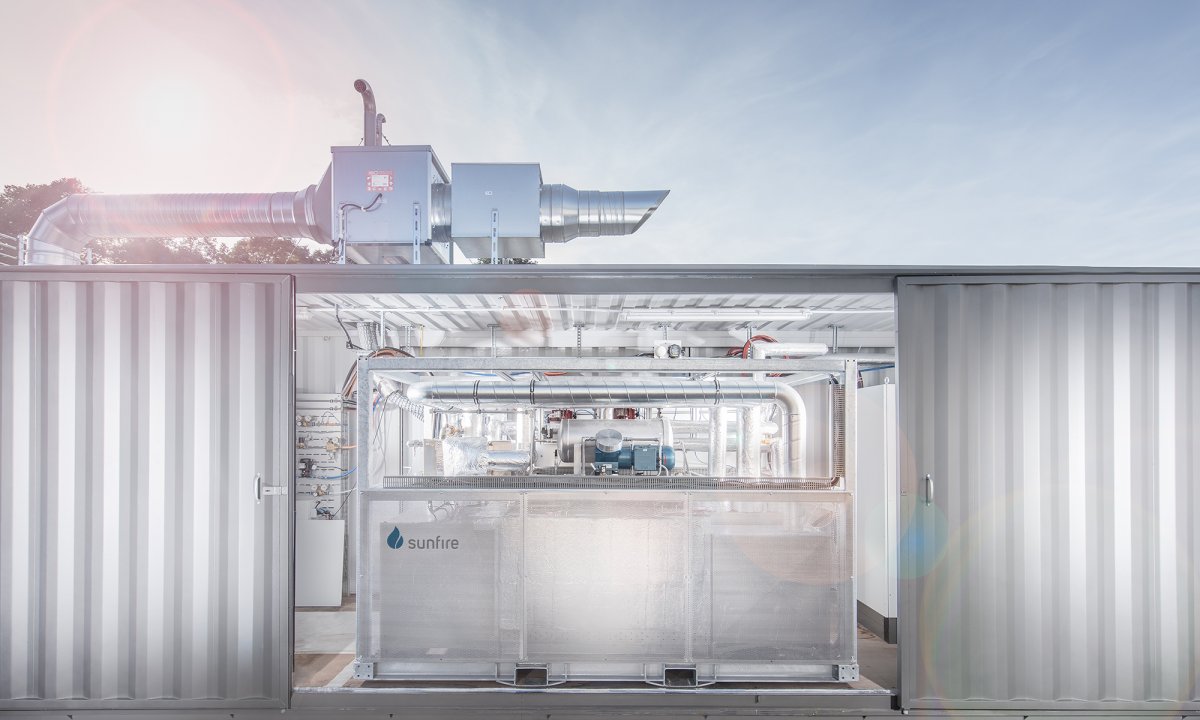CEEPR Working Paper 2021-007, May 2021
Gunther Glenk and Stefan Reichelstein

The large-scale deployment of intermittent energy resources, like wind and solar, has generally resulted in deregulated power markets becoming more volatile (Olauson et al., 2016; Davis et al., 2018). To balance supply and demand for electricity in real time, energy storage in the form of batteries or pumped hydro power is playing an increasingly important role. At the same time, hydrogen is increasingly viewed as an energy carrier with broad application potential in decarbonized energy economies (De Luna et al., 2019; Staffell et al., 2019).
Power-to-Gas (PtG) systems that split water molecules into hydrogen and oxygen via electrolysis can rapidly absorb surplus electricity during times of low prices (Shaner et al., 2016; Van Vuuren et al., 2018). This buffering capacity of PtG systems can be enhanced further by systems that are also capable of operating in the reverse direction, converting hydrogen to electricity during periods of limited power supply and accordingly high power prices (Albertus, Manser and Litzelman, 2020).
Reversible PtG systems can be designed in a modular manner, for instance by combining a one-directional electrolyzer for hydrogen production with a one-directional fuel cell or gas turbine for power generation (Guerra et al., 2020; Uniper SE, 2020). While electrolyzers have been found to become increasingly competitive in producing hydrogen (Guerra et al., 2019), fuel cells and gas turbines have so far been regarded as too expensive for producing electric power sold in wholesale markets (IEA, 2019).
Alternatively, solid oxide fuel cells constitute integrated PtG systems, as the same equipment can be utilized to deliver either hydrogen or electricity depending on the state of electricity prices at any given point in time. Solid oxide cells have been brought to market recently and their reversibility feature has been established in several studies and demonstration projects (elcogen, 2018; Regmi et al., 2020).
This paper first presents a novel analytical model examining the economic viability of reversible PtG systems. We then calibrate the model in the context of the electricity markets in Germany and Texas. Despite improvements in the cost and conversion efficiency of modular PtG systems, we confirm the findings of earlier studies that there is no economic case, either now or in the foreseeable future, for investing in modular systems that convert hydrogen back to electricity.
In contrast, we find that integrated PtG systems are competitive at current hydrogen prices, given sufficient variation in daily electricity prices, as is already encountered in the Texas market. While it is efficient for such systems to mostly produce hydrogen, they can also respond to high power prices with additional electricity supply. Due to this improved capacity utilization, integrated systems are positioned more competitively than one-directional electrolyzers on their own.
Finally, if recent trends regarding the acquisition cost of solid oxide cells continue, such systems will remain economically viable even with substantially lower hydrogen prices in the future. The reason is that the inherent flexibility of integrated reversible PtG systems allows them to respond to lower hydrogen prices by engaging more frequently in power generation.
References
Albertus, P., Manser, J.S. and Litzelman, S. (2020) ‘Long-Duration Electricity Storage Applications, Economics, and Technologies’, Joule, Vol. 4, Issue 1, pp. 21–32. doi: 10.1016/j.joule.2019.11.009.
Davis, S.J. et al. (2018) ‘Net-zero emissions energy systems’, Science, Vol. 9793 (June). doi: 10.1126/science.aas9793.
elcogen (2018) Reversible solid oxide cell technology as a power storing solution for renewable energy. Available at: http://bit.ly/385mR4N (last accessed: 13 January 2020).
Guerra, O. J. et al. (2019) ‘Cost Competitiveness of Electrolytic Hydrogen’, Joule, Vol. 3, Issue 10, pp. 2425–2443. doi: 10.1016/j.joule.2019.07.006.
Guerra, O. J. et al. (2020) ‘The value of seasonal energy storage technologies for the integration of wind and solar power’, Energy and Environmental Science, Vol. 13, Issue 7, pp. 1909–1922. doi: 10.1039/d0ee00771d.
IEA (2019) The Future of Hydrogen. Paris: IEA.
De Luna, P. et al. (2019) ‘What would it take for renewably powered electrosynthesis to displace petrochemical processes?’, Science, Vol. 364, Issue 6438. doi: 10.1126/science.aav3506.
Olauson, J. et al. (2016) ‘Net load variability in the Nordic countries with a highly or fully renewable power system’, Nature Energy, Vol. 1 (December), pp. 1–14. doi: 10.1038/nenergy.2016.175.
Regmi, Y.N. et al. (2020) ‘A low temperature unitized regenerative fuel cell realizing 60% round trip efficiency and 10 000 cycles of durability for energy storage applications’, Energy and Environmental Science. doi: 10.1039/c9ee03626a.
Shaner, M.R. et al. (2016) ‘A comparative technoeconomic analysis of renewable hydrogen production using solar energy’, Energy and Environmental Science, Vol. 9, Issue 7, pp. 2354–2371. doi: 10.1039/c5ee02573g.
Staffell, I. et al. (2019) ‘The role of hydrogen and fuel cells in the global energy system’, Energy and Environmental Science, Vol. 12, Issue 2, pp. 463–491. doi: 10.1039/c8ee01157e.
Uniper SE (2020) Siemens und Uniper bündeln Kräfte bei Dekarbonisierung der Stromerzeugung. Available at: https://www.uniper.energy/news/siemens-und-uniper-buendeln-kraefte-bei-dekarbonisierung-der-stromerzeugung (last accessed: 8 April 2020).
Van Vuuren, D.P. et al. (2018) ‘Alternative pathways to the 1.5°C target reduce the need for negative emission technologies’, Nature Climate Change, Vol. 8, Issue 5, pp. 391–397. doi: 10.1038/s41558-018-0119-8.
Further Reading: CEEPR WP 2021-007




